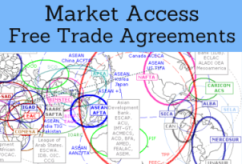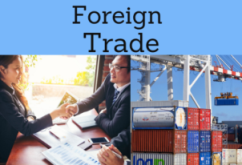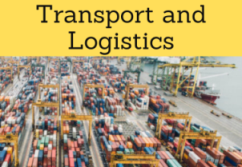Business in Congo, Brazzaville, Pointe-Noire
Foreign Trade and Logistics in Congo, emerging country. Congolese Petroleum
Government Vision 2025: “Congo: an emerging country.”
The Republic of the Congo is a developing country included in the heavily indebted poor countries initiative.
- Agriculture is the main economic activity of the Republic of the Congo
- The largest potash producer in Africa. Potash reserves: 800 billion tones
- Top economic sectors of the Republic of the Congo: agriculture, Petrol, and services
- Petrol (the fourth African producer), wood, manganese, natural gas, gold, iron, diamonds, copper, potassium, and zinc

- Introduction to the Republic of the Congo (Central Africa)
- Théophile Obenga (Congolese Historian)
- Congolese Economy
- International Trade of the Republic of the Congo
- Customs of the Republic of the Congo
- Foreign Trade and Logistics
- Port of Pointe Noire
- Congo Terminal. Port of Pointe-Noire
- Congo Basin (the second World's largest rain forest)
- Case Study:
- Special Economic Zones in Congo
- Congolese Petroleum industry
- Business and Investment Opportunities in the Congo
- Agriculture
- Mining
- Great Works Programme
- Infrastructure development
- Tourism
- Access to the Congolese market
- Business Plan for the Republic of the Congo

The educational aims of the Subject “Foreign Trade, Logistics and Business in the Congo”: are:
- To analyze the Congolese Economy, Logistics and Global Trade
- To conduct research on business opportunities in the Congo
- To research the trade relations of the Republic of the Congo with the student's country
- To learn about Congolese Trade Agreements
- To develop a business plan for the Congolese market

The Subject “Foreign Trade, Logistics and Business in the Congo” is included within the curriculum of the following academic programs at EENI Global Business School:
Master in Business in Africa, Transport and Logistics in Africa.

Doctorate in African Business.

Languages:  or
or  Congo
Congo  Congo
Congo  Congo.
Congo.
- Subject Credits “Doing Business in the Congo”: 1

International Trade, Logistics and Business in the Congo:

- Port of Pointe Noire
- Access to the Tripoli - Congo - Windhoek Logistics Corridor
Sample:


The Republic of the Congo's Preferential Trade Agreements:
- The Republic of the Congo and the Central African Economic Area
- Economic Community of Central African States (ECCAS)
- Central African Economic and Monetary Community (CEMAC)
- African Continental Free Trade Area
- Conference on the Great Lakes
- Harmonization of Business Law in Africa (OHADA)
- Africa-EU Partnership
- AGOA

- World Trade Organization (WTO)
- Agreement on Trade in Services (GATS)
- Agreement on the Application of Sanitary Measures
- Agreement on Technical Barriers to Trade
- Agreement on Preshipment Inspection
- Agreement on Safeguards
- Trade Facilitation Agreement
- World Customs Organization (WCO)
- Kyoto Convention
- Rotterdam Rules

- Economic Commission for Africa
- African Union
- AU Convention on Preventing and Combating Corruption
- AUDA-NEPAD
- African Development Bank
- Africa-Asia Partnership
- Africa-India Cooperation
- Africa-BRICS
- Africa-Turkey Partnership
- Africa-Korea Partnership
- Afro-Arab Cooperation
- Arab Bank for Africa (BADEA)

Global Organizations. The Republic of the Congo is a member of...
- United Nations
- World Bank
- World Trade Organization (WTO)
- International Monetary Fund
- Congolese languages: French, Lingala, and Kikongo
- Main cities in Congo are Brazzaville (Capital, 2 million people), Pointe-Noire (economic capital, 500,000 people), Nkayi, and Dolisie
- The borders of the Republic of the Congo are Cameroon, the Central African Republic, Angola, the Democratic Republic of the Congo, and Gabon
- Independence of the Republic of the Congo: 1960 (from France)
- Area of the Republic of the Congo: 341,821 km²
- Congolese population: 4,012,809
- The Departments of the Republic of the Congo are Likouala (Impfondo), Sangha (Ouesso), Cuvette Ouest (Ewo), bowl (Owando), Plateaux (Djambala), Pool (Kinkala), Bouenza (Madingou), Lekoumou (Sibiti), Niari (Dolisie) Kouilou (Pointe-Noire), and Brazzaville
More information: The Republic of the Congo (EENI African Business Portal).
Religion in the Congo:
- Christianity (50%): Catholicism (1.8 million) and Protestants (Methodists: 2 million)
- African Traditional Religions (48%)
- Islam (2%)
The Republic of the Congo belongs to the Central African Economic Area.


Economy of the Republic of the Congo:
- The economic efficiency of the Republic of the Congo (Africa) owes a great deal to the increase of the Congolese petroleum production (115 million barrels)
- Fiscal reform and debt relief obtained under the Heavily Indebted Poor Countries Initiative
- Petroleum production: 10 to 15 million tones annually. The Congolese reserves remain relevant
- Hydroelectric Potential: 2,500 megawatts
- Iron: 1 billion tones
- Congolese gas reserves: 120 billion m3
- Gold Fields in operation: 100 t/year over 30 years
- Top Congolese trade partners: The United States, France, China, India, the Emirates, and South Korea
- Top Congolese exports are petrol, timber, minerals, copper, precious stones
- Port of Pointe-Noire: the only Central African deep-sea port
The Republic of the Congo has many advantages and offers many business opportunities.
The preferred sectors for Foreign Direct Investment are:
- Agriculture, livestock, and fisheries
- Building and public works
- Forests
- Mining
- Energy
- Industry
- Tourism and hospitality
- Telecommunications
- Health and housing
- Education
- Banks, insurance, and microfinance
- Services
- Real Estate.

(c) EENI Global Business School (1995-2025)
Top of this page








 WhatsApp
WhatsApp
